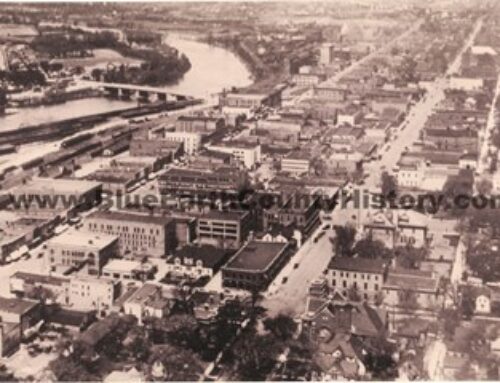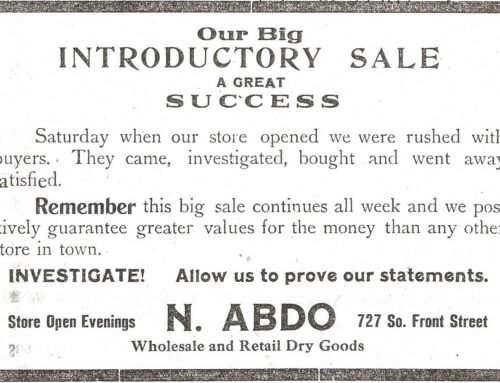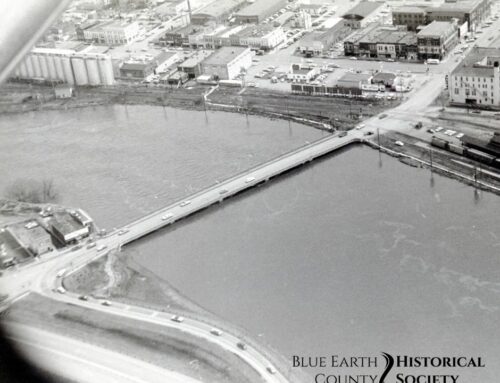Believe it or not … a homemade boat weighing thirty-three tons, named the See Scout, was once launched unto the Minnesota River at North Mankato and floated all the way to New Orleans. Not without trouble along the way, however.
Charlie Poliquin began his “seemingly never-ending saga,” as Ken Berg termed it several years later writing a column for the Free Press. Poliquin had never led a settled life, coming to Blue Earth County in 1935 as a farmhand, graduating from Rapidan in 1939, serving in the army during World War II, driving taxi in Chicago for a while, having his own tree trimming and dirt-moving business in North Mankato for seven years, and then farming near Madelia. He sold the farm to build his boat.
Poliquin began building in April 1958. The boat was seventy feet long, big enough for him to bring a jeep aboard further up the river. The kitchen was described by an auctioneer as “a woman’s dream,” with a four-burner stove and curtains at the windows. It could be a river cottage.
There were 2000 people present to see the boat launched on July 11, 1958. Unfortunately, Poliquin had chosen a very dry year for his exploit and the river was far below the bank. Christened with a free bottle of wine from Spinner’s Bar, it took five hours of effort to set it afloat, with the crowd helping to move it the last few feet. Repairs were needed immediately from damage done in the launch, and two days later the boat ran aground on the Mankato side of the river. There it stayed until the following spring.
March 30, 1959, the See Scout, as it was named, finally set out. Poliquin navigated two blocks before the boat was stuck on a sand bar. With a hand winch and steel cables, the boat moved perhaps an inch a day. Forty-five days later the boat was halfway to St. Peter. Then reality entered in. Poliquin was arrested for failing to pay child support. Charlie had hoped that his wife, who was expecting a baby, and their young daughter would join him on the trip. Instead, she filed for divorce. Further complicating his situation, he was charged with trespassing for driving his jeep across a farmer’s cornfield to get to and from the river. It seemed the only way to get clear of sand bars and arrest warrants was to sell the boat. He would auction it off for a minimum of $3500. The highest bid was $1700.
Deciding to proceed, Poliquin began to lighten the load, throwing off what did not seem absolutely necessary, including six tons of blacktop. The river became more navigable, and Poliquin passed Ottawa by June 1. On June 4, he sailed from LeSueur to Belle Plain in just twelve hours, including a three-hour stop for repairs and lunch.
Poliquin had a policy of no newsmen on board while traveling. In time a radio telephone was installed, at the request of the Free Press reporters trying to follow the boat, often on foot. One enterprising reporter, Lowell Schreyer, signed on for a time as crew.
Arriving at Highway 65/Lyndale bridge by June 9, a stop gave an opportunity to allow people to visit the boat, for a fee. It was reported that he was taking in $1000 a day, with 3000 to 5000 visitors. Poliquin denied that it was that much.
The Coast Guard also needed to inspect the boat before it entered the Mississippi River. Poliquin had been informed, while still in Mankato, that he would need extra equipment. Ultimately proper lights, horn, bell, fire extinguishers, and life preservers were added. The Coast Guard also limited the number of people who could be on the boat at one time to six visitors.
July 16 Poliquin made a side excursion to the Mississippi River Flats below the University of Minnesota. Then he set off down the Mississippi, no longer stopping for visitors. He passed Winona on August 10, Cape Girardeau on September 16, arriving in New Orleans on October 5. The boat was moving at five to twelve miles per hour and running 15 miles on $1.00 of fuel. Although at the beginning of the trip Poliquin had planned to sail on to South America, by October he decided the boat was not sea-worthy enough.
Poliquin hoped to sell the boat, and he returned to Minnesota to fight the divorce. Perhaps, he said, someday he would build See Scout II. See Scout I sank in New Orleans that winter, on February 4, 1960. Poliquin, himself, passed away in 1994, in Washington State.
Although Ken Berg, in the Free Press, termed Charlie Poliquin’s voyage as one of the funniest stories in the paper’s history, and his trip was described as “an odyssey full of oddities” and “a journey to be jeered at,” a writer for the Hastings Gazette commend Poliquin, writing “what sets him a bit apart, perhaps, is the bulldog determination to deliver on plans which are the stuff that typical dreams are made of.”
By Hilda Parks







Leave A Comment